#decla-bioscop
Explore tagged Tumblr posts
Text

Count Orlok (Max Schreck) does not appear until 21 minutes into "Nosferatu" (1922), and is only seen on screen for a bit less than 9 minutes in total throughout the whole film. Schreck's father did not approve of his son's ever-growing enthusiasm for theater. Schreck's mother provided the boy with money, which he secretly used for acting lessons, although only after the death of his father did he attend drama school. After graduating, he travelled briefly across the country with poet and dramatist Demetrius Schrutz. For three years between 1919 and 1922, Schreck appeared at the Munich Kammerspiele, including a role in the expressionist production of Bertolt Brecht's début, "Trommeln in der Nacht" (Drums in the Night) (in which he played the "freakshow landlord" Glubb). During this time he also worked on his first film "The Mayor of Zalame,' adapted from a six-act play, for Decla Bioscop. In 1921, he was hired by Prana Film for its first and only production, "Nosferatu." The company declared itself bankrupt after the film was released to avoid paying copyright infringement costs to "Dracula" author Bram Stoker's widow, Florence Stoker. "Shadow of the Vampire" (2000) is a fictionalized depiction of the events surrounding the film's production based on the urban legend that Max Schreck was in actuality a vampire. Schrek was played by Willem Dafoe in that film, and was nominated for the Academy Award for best supporting actor. (IMDb)
1 note
·
View note
Photo
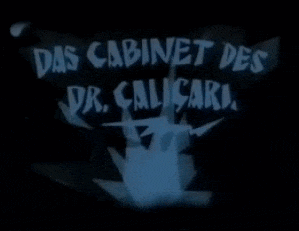
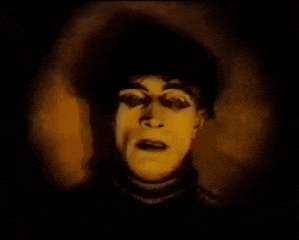
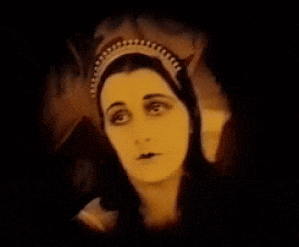

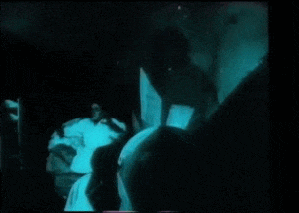
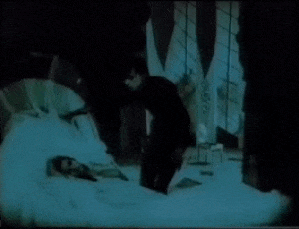
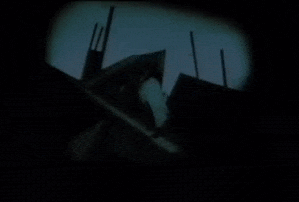
‘Das Cabinet des Dr. Caligari‘ 1920.
#deutscher stummfilm#silent film#silent era#silent horror film#conrad veidt#lil dagover#robert wiene#decla film#1290#classic silent#decla-bioscop#das cabinet des dr. caligari#the cabinet of dr. caligari#german expressionism
114 notes
·
View notes
Photo

Decla-Film-Gesellschaft’s logo in the opening of Das Cabinet des Dr. Caligari (dir. Robert Wiene, 1920).
Decla Film was formed in 1911 as the German subsidiary of the French company Eclair, it was taken into German ownership in 1915 during the First World War. Decla is an abbreviation for Deutsche Eclair.
In 1916 Decla-Film-Gesellschaft Holz & Co was founded by Erich Pommer and the co-founder Berlin film distributor Fritz Holz.
In 1920 Decla merged with Bioscop Film to form Decla-Bioskop A.G. In 1923 the company became a part of the UFA – Universum-Film AG, and acted as a subsidiary. Nowadays, it's known as Studio Babelsberg.
#decla#deutsche eclair#decla film#decla-film-gesellschaft holz & co#decla-bioskop a.g.#decla-bioscop#ufa#universum-film ag#studio babelsberg#das cabinet des dr. caligari#the cabinet of dr. caligari#robert wiene#company logo#offended eagle#as they claim to be its nickname#silent movie#weimar cinema#own gif#own post
5 notes
·
View notes
Photo

Publicity postcard of Max Schreck, 1922
For three years between 1919 and 1922, Max Schreck appeared at the Munich Kammerspiele, including a role in the expressionist production of Bertolt Brecht’s début, “Trommeln in der Nacht” (Drums in the Night) (in which he played the “freakshow landlord” Glubb).
During this time he also worked on his first film “The Mayor of Zalamea”, adapted from a six-act play, for Decla Bioscop 1921, he was hired by Prana Film for its first and only production, “Nosferatu”.
The company declared itself bankrupt after the film was released to avoid paying copyright infringement costs to Dracula author Bram Stoker’s widow, Florence Stoker. Schreck portrayed Count Orlok, a character analogous to Count Dracula.
8 notes
·
View notes
Video
vimeo
The Story of “Genuine”: An Introduction to a Lost Silent Film
An introduction to a lost silent film directed by Robert Wiene. The little known followup to screen classic, "The Cabinet of Dr. Caligari", "Genuine" was produced by David Oliver for the Berlin based Decla-Bioscop company in 1920. Outside of the Museum of Munich's film vault, it exists only in fragments. Now for the first time, we present the fascinating facts behind the mysterious production of a gorgeous yet forgotten film. Ignored upon it's 1920 release and abandoned by history, it remains a fascinating artifact from a lost era.
7 notes
·
View notes
Video
youtube
#The Cabinet of Dr. Caligari#Robert Wiene#Carl Mayer#Hans Janowitz#Werner Krauss#Conrad Veidt#Friedrich Fehér#Lil Dagover#Hans Heinz v. Twardowski#Rudolf Lettinger#Willy Hameister#Decla-Bioscop
0 notes
Photo


Visual Exercise 4
Original image (Image 1) is a film still taken from the film “The Cabinet of Dr. Caligari” - Mayer, Carl, et al. The Cabinet of Dr. Caligari . Performance by Werner Krauss, et al., Decla-Bioscop, 1920.
My image (Image 2) uses the following camera settings: ISO 100, f/4.5, 1/50.
Having an interest in film and having studied it previously, I came to have a great interest in the German Expressionism movement - one which strongly influenced the arts and especially film. I’ve always been fascinated by the use of shapes, bold and harsh shadows, and different camera angles, in order to create different tones. When taking my image above, I had all of such concepts in mind, influencing the way I captured the space. When trying to come up with ideas for this project, I thought back to my interest in German Expressionism and searched through different images relating to the movement. I eventually came across a still from the expressionistic film The Cabinet of Dr. Caligari that I found very interesting and thought would be interesting to produce an image with inspiration taken from it. Looking back through my recent pictures, I then realised the similarities between the still of the film, and the above image of mine (which I had recently taken) and decided to use it. I realise it would have been better to have first found the film still and then taken my image afterwards, however I do believe that my image is quite similar to the still overall. Having seen expressionistic films before, I must have had images from the films in my mind at the time and taken inspiration from them subconsciously!
1 note
·
View note